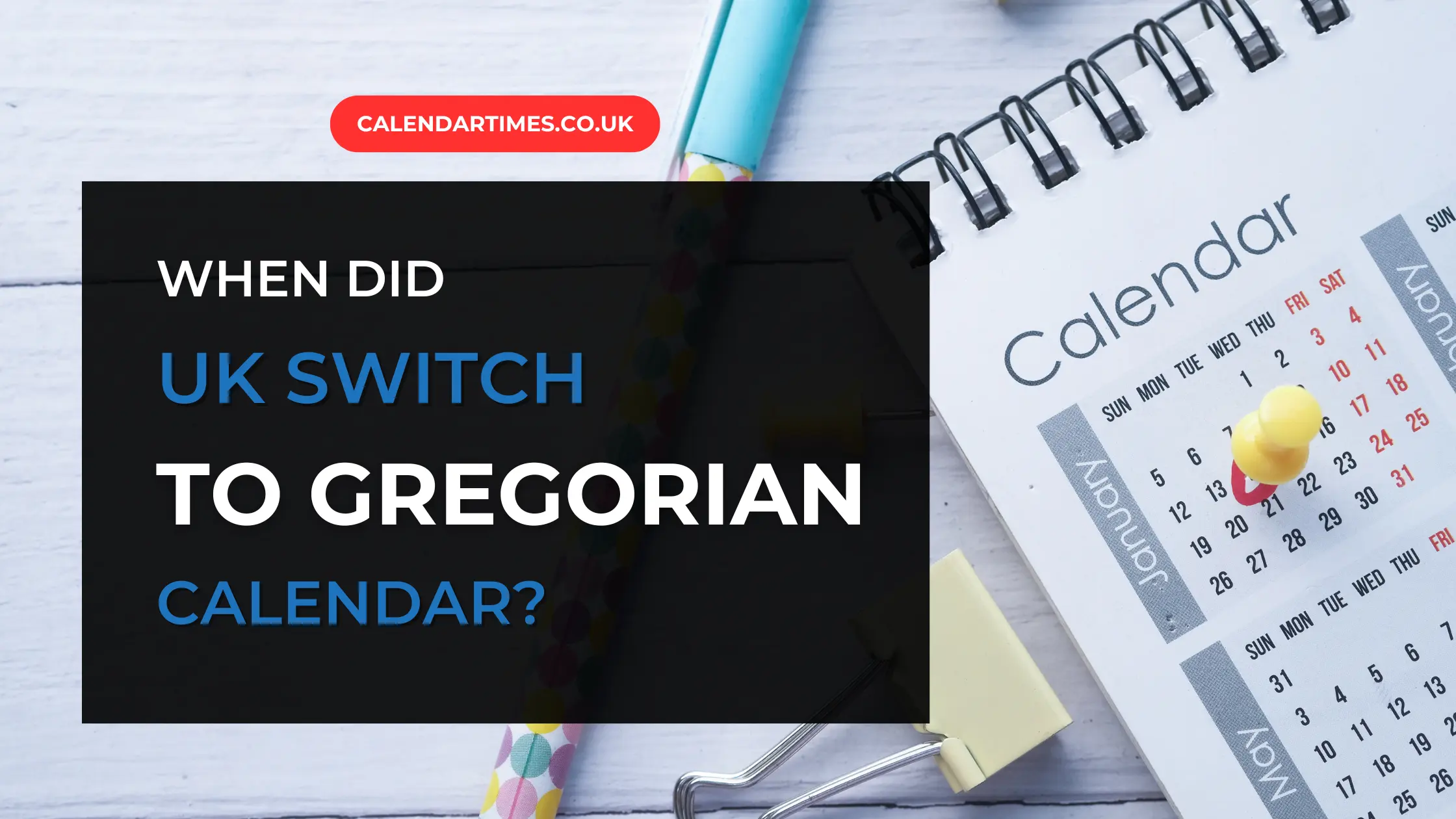In 1752, Britain officially adopted the Gregorian calendar to replace the Julian calendar. This major calendar reform was driven by the British Calendar Act of 1751 and resulted in an 11-day adjustment to synchronize with the more accurate Gregorian system.
The Gregorian Calendar
The Gregorian calendar is the system most of the world uses today. It was first introduced by Pope Gregory XIII in 1582 to correct inaccuracies in the Julian calendar, which miscalculated the length of a year by about 11 minutes. Over centuries, this slight error caused significant drift, misaligning the calendar with astronomical events such as the spring equinox.
Gregorian Calendar Introduction Worldwide
The Gregorian calendar was initially adopted by Catholic countries such as Spain, Portugal, and Italy in 1582. However, Protestant nations, including England, were slower to adopt the change due to religious and political tensions.
The Julian Calendar
The Julian calendar, introduced by Julius Caesar in 45 BCE, was revolutionary for its time. It standardized the year at 365 days with a leap year every four years. However, its slight miscalculation in the solar year eventually led to errors that necessitated reform.
Conversion Between Julian and Gregorian Calendars
Switching from the Julian to the Gregorian calendar required the elimination of several days to realign the calendar with astronomical events. In Britain, 11 days were removed during the 1752 calendar change to synchronize with the Gregorian system.
1752 Calendar Change
In September 1752, Britain made the historic shift to the Gregorian calendar. To align with the new system, the calendar jumped from September 2nd to September 14th, effectively “losing” 11 days. This adjustment was mandated by the British Calendar Act of 1751.
The 1752 reform wasn’t just about losing days; it also standardized the start of the year. Previously, the new year began on March 25th. After the reform, January 1st became the official start of the year in Britain.
Changes of 1752
The changes of 1752 were met with confusion and resistance. Many people were concerned about losing days from their lives, which fueled rumors of a “calendar riot,” although historians debate whether such riots occurred.
Number of Lost Days Varied
The number of days skipped during the calendar transition varied across countries. For example, Catholic countries that adopted the Gregorian calendar earlier skipped 10 days in 1582, while Britain skipped 11 days in 1752 due to the additional drift.
Also Read: How to Maximise Annual Leave 2025 UK?
What Calendar Did England Use Before the Gregorian Calendar?
Before adopting the Gregorian calendar, England used the Julian calendar. Although groundbreaking for its time, this older system became increasingly inaccurate over centuries, necessitating the change.
Difference Between Julian and Gregorian Calendars
The main difference between the Julian and Gregorian calendars lies in their leap-year rules. The Gregorian calendar refined the leap year system, making it more accurate in aligning with the Earth’s orbit.
When Did the Julian Calendar Start?
The Julian calendar began in 45 BCE under the rule of Julius Caesar. It introduced the concept of a 365-day year with an extra day added every four years.
When Did the Gregorian Calendar Start?
The Gregorian calendar was first introduced in 1582 by Pope Gregory XIII. Its adoption spread gradually across the globe, with Britain making the switch in 1752.
Why Did 11 Days Disappear in 1752?
The 11 days disappeared to correct the accumulated error in the Julian calendar and bring Britain in line with the Gregorian system. This adjustment ensured alignment with the solar year and seasonal events.
FAQs
Q1: When Did Britain Change from the Julian to the Gregorian Calendar?
Britain officially transitioned from the Julian to the Gregorian calendar in September 1752. This move brought the country into synchronization with much of Europe.
Q2: When Did the World Switch to the Gregorian Calendar?
The world adopted the Gregorian calendar at different times. Catholic countries were the first to switch in 1582, while Protestant and Orthodox nations followed much later, some as late as the 20th century.
Q3: When Did We Go from 13 Months to 12 Months?
The shift from 13 months to 12 months occurred long before the Julian or Gregorian calendars. Ancient lunar calendars often had 13 months, but solar-based calendars standardized at 12 months to match the Earth’s orbit around the Sun.
Q4: Why Did They Change the Calendar from Julian to Gregorian?
The change from Julian to Gregorian was driven by the need for greater accuracy. The Julian calendar’s errors in calculating the solar year led to misaligned seasons and religious observances, prompting the reform.
Q5: What was the purpose of the Gregorian calendar reform?
To correct inaccuracies in the Julian calendar and better align with the solar year.
Q6: Why did Britain delay adopting the Gregorian calendar?
Religious and political differences delayed adoption until 1752.
Q7: How many days were skipped in Britain during the switch?
Britain skipped 11 days, moving from September 2nd to September 14th, 1752.
Q8: What was the British Calendar Act of 1751?
It was the legislation that mandated Britain’s switch to the Gregorian calendar.
Q9: Did the calendar change affect public holidays?
Yes, the change required adjustments to public holidays and observances.


